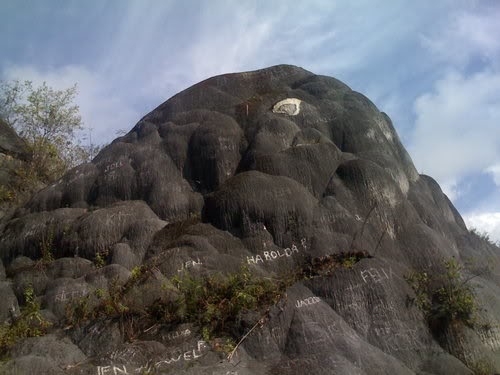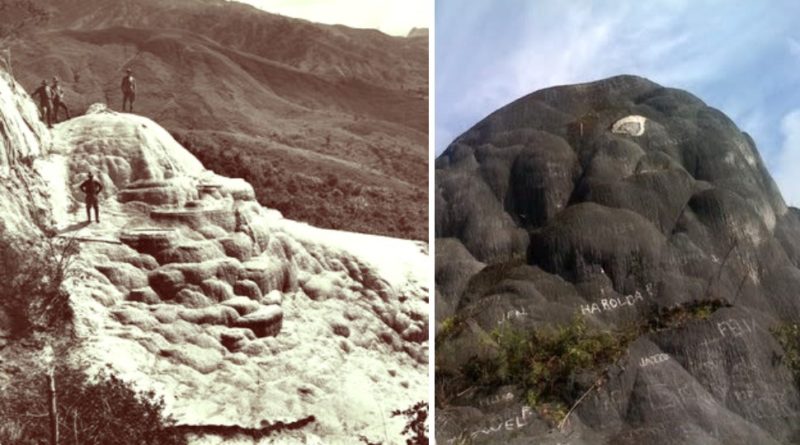MANILA- What Ever Happened to the Legendary Salinas Salt Springs?
.

For millions of years, a mountain in the town of Bambang, Nueva Vizcaya produced salt. It was called the Salinas Salt Springs. It was a geographical protrusion on the landscape that looked like a strangely shaped hill, only it was covered in glimmering salt. From afar, the Salinas Salt Spring looked like a shiny gem in the middle of a forested mountain. It was so beautiful it had been listed as one of the natural wonders of the world, according to the Philippine Information Agency.
.
.
For centuries, people in Bambang made their livelihood around the salt-producing mountain. They cultivated saltwater fish in saltwater ponds found on terraces they built around the spring. They also mined the mineral-rich salt and sold it to lowlanders.
The strange geographical feature, also called travertine, had been a popular tourist attraction since the time of the Spanish colonization of the Philippines. It was the Spaniards who named it Salinas, which literally means saltworks or salt mine.
But 20 years ago, the Salinas Salt Springs suddenly stopped producing salt.
.
What Happened to the Salinas Salt Springs?
For centuries, many people thought the salt from the Salinas Salt Springs comes from the Pacific Ocean through underground shafts that push pressure into the Luzon mainland and result in the salt spring on the mountain. Geologists figured this is incorrect.
According to geologists, the Salinas Salt Spring mounds were formed through millions of years by the continuous flow of a natural spring, which contained sulfate and carbonate salts. The process was similar to the formation of stalactites and stalagmites.
One day, in 1990, the people of Bambang noticed the mountain had stopped producing water and salt. The locals hoped that it would be just a temporary drought. Days stretched into months, and they realized their little white mountain would probably never produce salt again.
The once glimmering mountain slowly faded in beauty as the monsoon rains washed away its fine powder of white mineral. Vandals also defaced the natural monument, writing their names and initials on the million-year-old mound.
Tourists stopped coming to Bambang, and the once popular attraction is now a forgotten relic of the past.
Lost Glory: The Salinas Salt Spring Today
.

In 2000, a geologic study commissioned by Nueva Vizcaya’s governor Rodolfo Agbayani concluded that the 1990 Luzon Earthquake was the culprit in the death of the Salinas Salt Springs.
According to the study, the earthquake diverted the underground water that fed the Salinas Salt Springs. Nothing could be done to save it.
.
New Salt Spring Emerged in 2018
In 2018, a new salt spring emerged a few kilometers away from the Salinas Salt Springs. Giovanie Magat, community environment and natural resources officer at Nueva Vizcaya, said the emerging salt spring is located on a hill in Barangay Manamtam.
Currently, the new salt spring in Barangay Manamtam is still growing in diameter and height, offering a promising new tourist attraction for the people of Bambang. Nueva Vizcaya’s provincial government has taken steps to protect the site.



 Memento Maxima Digital Marketing
Memento Maxima Digital Marketing






